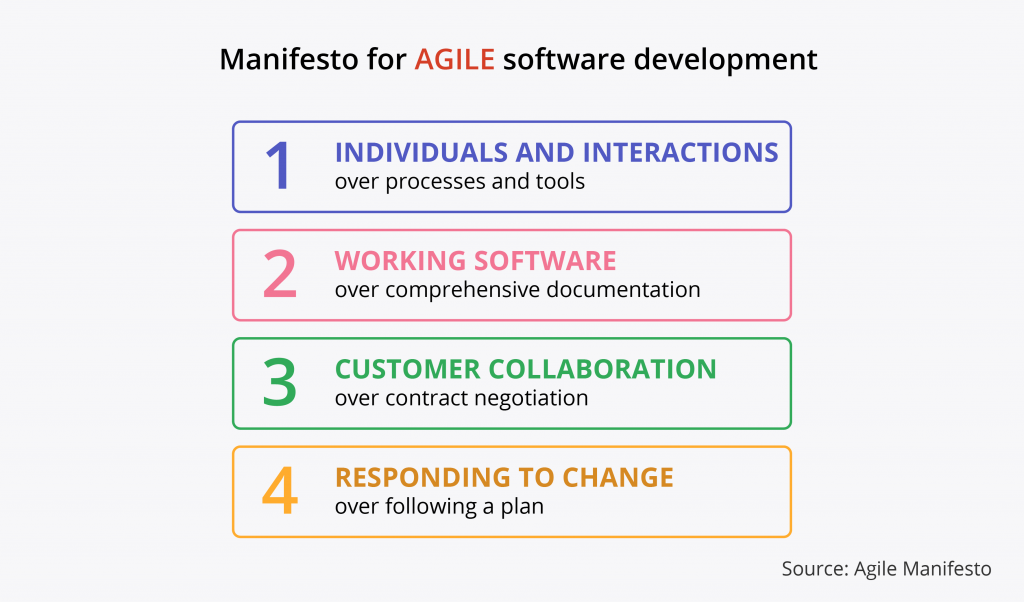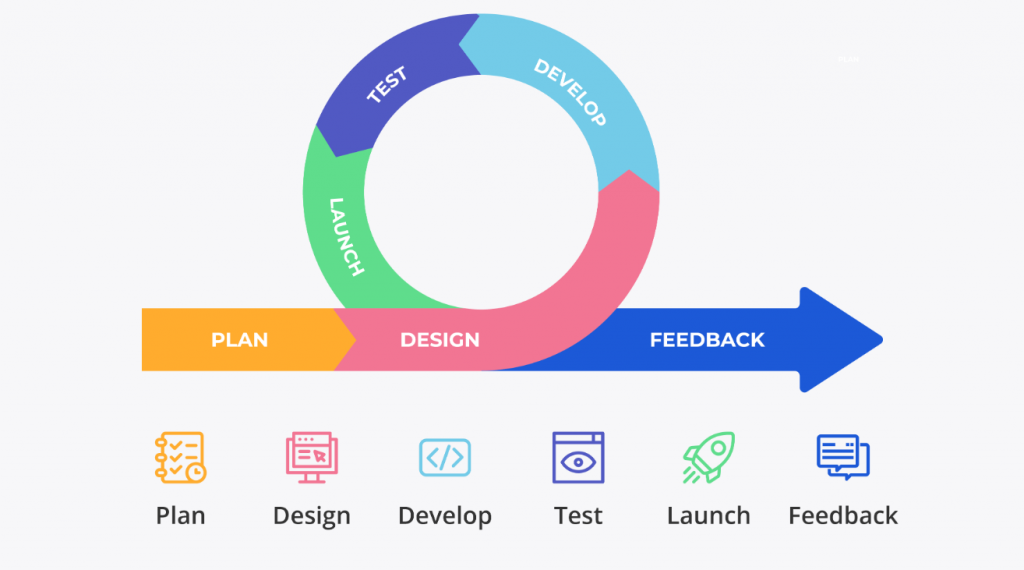How to Avoid Project Delays: Practical Tips and Tricks

Before you start cooperation with a software development company and entrust them with your product idea, you’ll want to ensure a development team can manage your project properly so you don’t face delays. But how can you know an outsource company will deliver your project on time?
Our article will help you figure out what causes delays and what an IT company should do to minimize and avoid them.
The most common reasons why project delays happen
So why do software development companies fail to deliver projects on time? Let’s consider the most common causes for delays you may face while collaborating with an outsourcing company.

- You provide a team with poor and unclear project requirements. One of the most common projects delay reasons is dealing with unclear requirements. Let’s say you’re going on a trip without knowing your destination. It will be difficult to get to the endpoint without a clear route plan. It’s the same thing with an IT project when you start a development process without clear requirements.
Your development team will simply not be able to properly plan the project if they have to deal with ambiguity. At best, they will ask you to explain, and at worst, they will try to guess on their own. However, both cases entail rework and delays. So, you should remember that poorly specified requirements often result in loss of development time and costs, low-quality project documentation, and eventually, a project failure.
- The outsourcing company may lose the key project players. This reason can be attributed to unforeseen circumstances. Sometimes there are cases when a team member decides to leave the project. And even if you lack one specialist, the project development process will not finish on time. Of course, this problem can be solved by hiring the missing talents, or the team can share tasks among themselves. But, nevertheless, keep in mind that this will take time.
- You have poor and irregular communication with your outsource team. Communication is the key to success, especially when you have a remote development team. If the software development company and client don’t communicate well, it can lead to delays. For example, if there were updates and you didn’t review them in a timely manner. As a result, you will need more time to understand all of the changes. And if something goes wrong, the team will have to redo everything. Late communication always results in delays.
- The development team underestimated the project complexity. At first glance, the functionality may not seem so complicated. And if at the initial stage developers don’t understand all the project intricacies and provide optimistic estimates, you run the risk of dealing with unexpected difficulties and wasted time.
All these factors are not only frustrating but also can end up costing your company more than just time. Now let’s look at the practical tips on what to do when a project gets delayed and effective ways to avoid project delays.
How to avoid software project delays when cooperating with an IT outsourcing company
There are various approaches that help outsourcing development companies deliver projects on time. Knowing these essential activities allows you to understand whether your team will properly plan your project, carefully organize the development process, and meet your project deadlines.
Let’s take a closer look at the key steps any software development vendor should take to keep an IT project on track.
Formalize clear project requirements
Solid project requirements are a key to accurate project estimation and defining future steps to achieve needed results. At the initial stage, your outsourcing development vendor should understand the main idea of your project by eliciting its requirements. Usually, project requirements include information such as needed functionality, expectations on cost, examples of competitors with the same product, and deadlines.
For example, we at Alternative-spaces start our software development project with a product discovery stage. This phase allows us to define project complexity and what functionality to implement, test the market viability, set deadlines, choose required technologies, clarify expectations on budget, and plan a project. We prepare documentation that includes all the key project details to implement it properly. As a result of the product discovery phase, we can organize smooth and timely product development and stay on the same page with our clients.
Define project scope
Before starting the development process, your team should determine the scope of work that should be completed in a specific period. This planning phase is vital since it clarifies project objectives, what goals the team should achieve, and breaks down large tasks into small ones making the development process more structured.
For example, at Alternative-spaces, we provide our clients with a project manager who will prepare a document with a detailed product feature list, deadlines, and responsibilities. Thus, our clients are continually aware of their project progress and ensuring the team will meet deadlines.
Cooperate with an outsourcing company that uses the Agile approach
Agile is a popular development methodology that is used by 76% of IT businesses to enhance project efficiency. This project management methodology allows developing a product by breaking it into short cycles. Dividing the development process into these cycles (or sprints) allows the team to accelerate production and respond flexibly to changes.
The Agile approach offers the four core values and principles to make the development process more effective and sustained. They are:

At Alternative-spaces , we use Agile methodology to add to our development process more flexibility, speed, quality, and transparency. When we start our development process, the team cyclically passes through development phases: planning, development, reviewing, launching.

At every stage, we communicate regularly with clients to keep them informed and gather feedback. Moreover, these development cycles enable our team to flexibly make continuous improvements avoiding development issues and delays. As a result, our team and clients deal with a structured, iterative development process that allows delivering a valuable final product on time.
Communicate frequently and regularly
A common source of misunderstanding is the lack of effective communication between clients and an outsource development team. During the project, you should be involved in the development process to always be aware of the project progress, provide your feedback, and make changes if needed.
Signs that you have well-established communication on the project:
- all team members are open to dialogue
- meetings are conducted carefully and fully documented
- all information on the task is collected in an understandable and concise way
- the client and all team members understand the goals equally
- there are two task tracking fields: internal for the team and external for the client
There are various activities we take to always stay in touch with our clients and keep the development process transparent for all project participants. Let’s consider them.
Sprint planning. At the beginning of the sprint, our development team holds a sprint planning meeting. This event helps all team members to define sprint goals, set priorities, determine tasks they will work on during the current sprint. As a result, the team knows their responsibilities and will follow the plan to meet deadlines. And our clients have a complete picture of project progress and can control how the development process goes.
Daily meetings. Our development team has daily standups that help understand how the team is progressing towards the goals: what each team member did yesterday, what is planned for today, and what challenges they are facing. These meetings help define the overall progress of the work, identify predicaments and ways to solve them.
Regular calls. We set regular calls with our clients to receive immediate feedback on our team’s achievements and to directly sync on project progress.
Specialists acting as the liaison. A project manager is a bridge between clients and the development team. 77% of high-performing projects have project managers in the team. Our project managers will control your development process and keep you informed at all stages of development.
Moreover, we provide an opportunity for our clients to have a chief technology officer (CTO) in their team. This specialist will control all technical issues during the development process and make sure the company’s technology fully satisfies its business strategy. Experience has shown 33% of tech startups that hire a CTO boost their performance.
So, to always keep you aware of the project progress, we provide you with the appropriate specialists in a team. Our CTO and project manager will control your development process and keep your communication at a high level.
Demo. To stay on track, our development team regularly provides all stakeholders with a demo presentation. We hold this meeting at the end of each sprint. We prepare a report or video presentation on sprint results and the project’s progress as a whole.
At Alternative-spaces, communication is a priority. It’s important for us that our clients are always aware of their projects’ outcomes and can provide timely feedback to avoid delays.
Manage a project with the use of special tools
Usually, IT companies use special tools for effective project management. The right tools allow a development team and clients to ensure a well-established workflow, provide visibility to the whole team, and help avoid project delays. Most likely, your development team will offer you to use tools such as Jira, Wrike, Asana, or Kantree.
At Alternative-spaces, we use JIRA that allows our clients and the team to:
- thoroughly plan a project
- set up tasks
- track task status and stay updated
- manage calendar activities
- stay informed of everyone’s workload
The use of a project management tool facilitates progress tracking and allows us to set up communication between our clients and the development team in an efficient and convenient way.
Track project results
Tracking progress is essential to ensure a project is on its way to success. As a rule, outsourcing companies should do a regular follow-up that helps all team members and stakeholders stay on task, understand strong and weak points, keep the team engaged, and stay in line with the project plan.
Here are the essential activities that we do at Alternative-spaces to effectively track our client’s project progress:
- establish milestones to do tasks in sequence and complete them appropriately
- define key project indicators (KPIs) to measure and compare results in terms of how well team members are achieving certain goals
- use tracking and reporting tools to get automatic reports with accurate information on your progress
- set clear deadlines and regularly follow up with a team
Our project manager assists you in tracking all project outcomes, provides all required documentation and reports to demonstrate your team has a robust process and meets all deadlines.
Get your project on time
Sometimes, even well-considered plans can’t prevent delays. You should be ready for unforeseen circumstances. Although managing a project and meeting deadlines may seem challenging, you can have a transparent and fruitful development process by cooperating with an experienced software development company.
At Alternative-spaces, we value our reputation as a reliable tech partner to our clients and build a dedicated team that delivers projects on time and within budget. If you’re looking for a team with a well-established workflow to deliver a product on schedule, just drop us a line!
Content created by our partner, Onix-systems.
 Home
Home